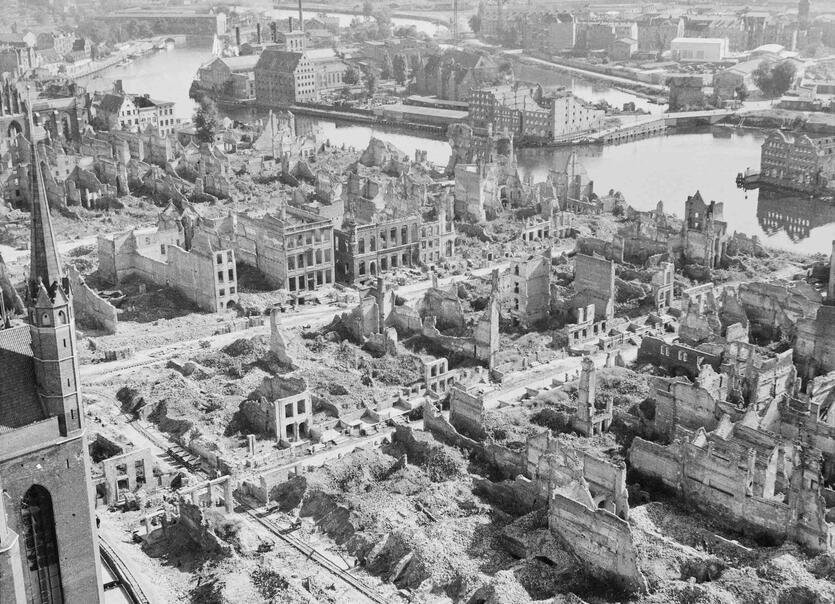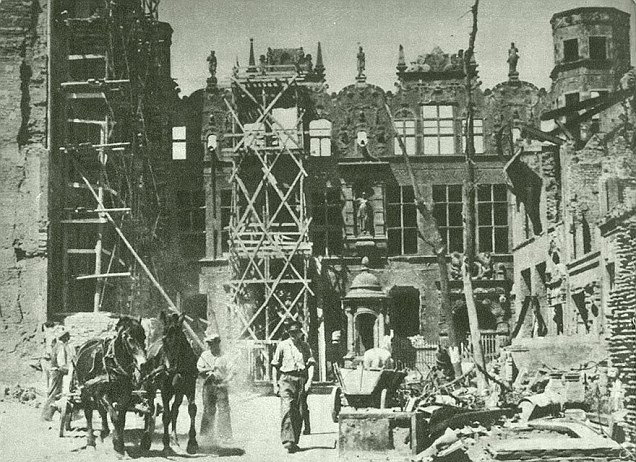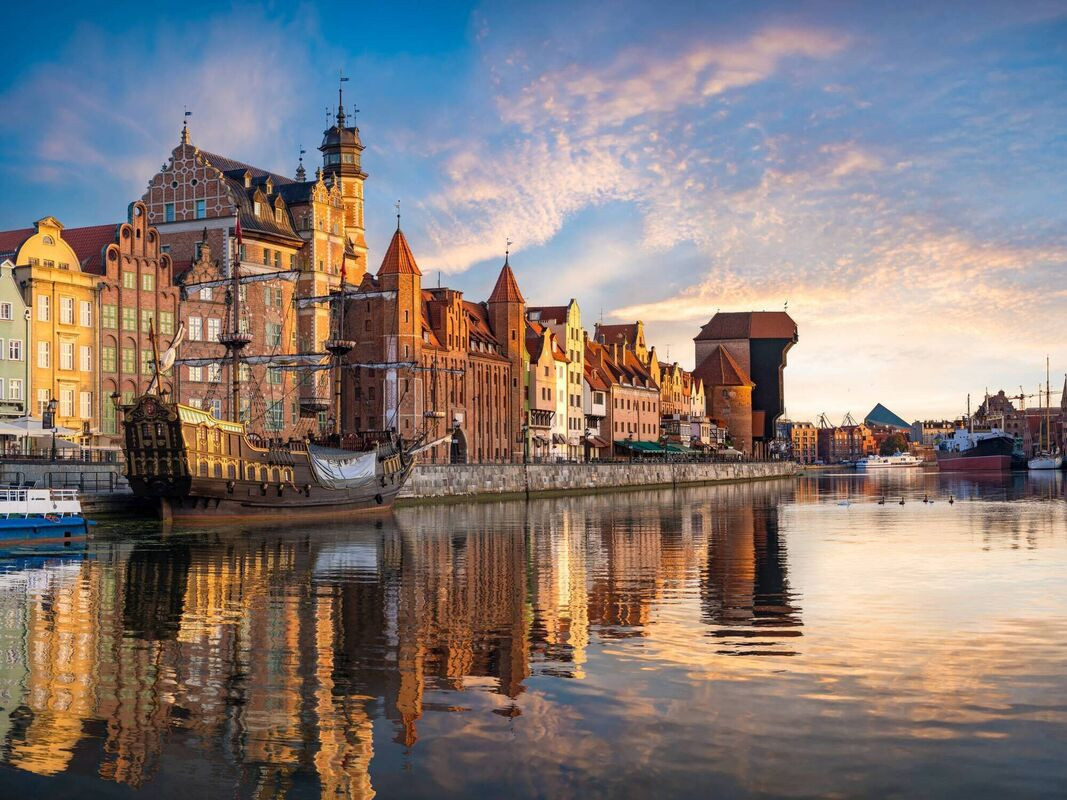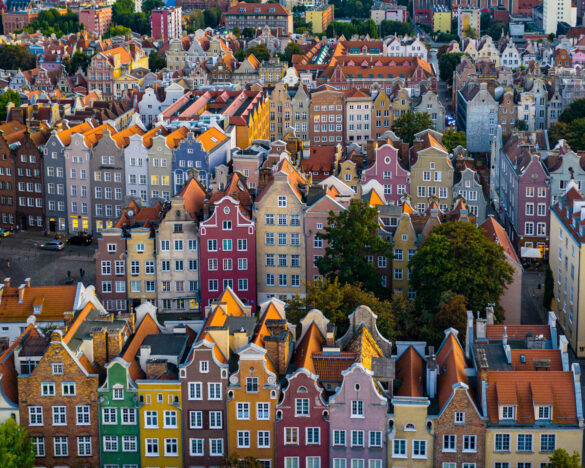While restoring Ukraine, we should also know how other countries coped with this task. After all, someone else's experience will allow us to avoid mistakes and take only the best. So, we continue to examine cases of post-war reconstruction in other cities, this time we will speak of a Polish port city Gdańsk with a long German history and its rebuilding.
Historical context and destruction volumes
Historically, the Polish city of Gdańsk had the status of the “Free City of Danzig” since 1920 under the protectorate of the League of Nations. It, like other territories, was separated from Germany and joined to Poland with its status under the terms of the Treaty of Versailles. However, the German population remained in the city. Therefore, Hitler's support was growing against the backdrop of economic difficulties in Gdańsk in all interwar years. German police detachments were operating in the city at the same time as Polish law enforcement officers and military structures.
The city was clamped between German Pomerania and East Prussia and met World War II as one of the first cities. The Nazi troops decided to clear all Polish structures in September 1939, so the main targets were the Polish post office and the military warehouse on the Westerplatte peninsula. At that time, the city was severely damaged, with Soviet bombings causing the most casualties in 1945.
Almost 90% of the city was destroyed, and more than 80% of buildings in the historic center were significantly damaged. Fires that covered Gdańsk simply did not have time to be put out. Locals left their homes because it was impossible to live in such conditions. Gdańsk has lost both historical and background development. Surprisingly, the City Hall and the main post office, which were heroically defended by the Poles at the beginning of the German invasion, remained intact.
 This is what the center of Gdańsk looked like© Gdansk.pl
This is what the center of Gdańsk looked like© Gdansk.pl
Rebuilding in Polish way
The reconstruction began immediately after the liberation of Gdańsk in 1945. Initially, there was the dismantling of rubble, the construction of new bridges, and the establishment of basic utilities. Moreover, there were discussions among planners and residents about whether to demolish and build a new city nearby, move the port to another place, or restore it with the remaining details. The city was short the money to rebuild the center, which was five times bigger than the center of Warsaw.

Gdańsk © The Danzig Academy of Fine Arts
After many discussions, the national conference of restorers under the leadership of Jan Zachwatowicz adopted a resolution on the restoration of the center of Gdańsk within its historical boundaries on September 25, 1947. Locals supported the idea that the city should be restored as it was in the 18th century, before the division of the Polish-Lithuanian Commonwealth and further Germanization. There was a prevailing desire to abandon the Prussian heritage after the Nazi crimes, even if the city would look completely different as a result.
Edmund Osmańczyk, a Polish statesman, said: “We will not weep over the ashes, we will not restore these reminders of the Teutonic knights and the power they once possessed. We don't want to remember it. We'll build in the Polish way, not in the manner of the Teutonic invaders.”
At first, historical monuments and buildings that survived the war were restored in Gdańsk. Poles were the main driving force behind the reconstruction of Gdańsk because the residents manually cleared the city streets. Primarily, the reconstruction process was self-sustaining because bricks of destroyed houses had been used, and then materials began to be supplied from Polish cities near Gdańsk.
The city chose a rather unusual rebuilding concept. The main grid of the city and its borders, as well as the lines of the blocks, remained unchanged. And uncomfortable cramped houses were completely renovated from the inside, yards were expanded and schools, kindergartens, and hospitals were built. The historic view of Gdańsk was combined with comfortable living conditions.
The result is a better version of the city
The reconstruction of the city lasted more than 70 years and continues in some places until now. Nowadays, modern projects such as the Solidarity Center, which started the collapse of communism in the 1970s, the Shakespeare Theater, and the World War II Museum coexist harmoniously with the saved historical building. There are also many Art Nouveau buildings. It is interesting that architects resorted to pseudo-reconstructions and Disneyfication of urban space in the 80s and 90s (it's when a place or object was deprived of its original character and look to present in an updated form, without negative memories and connotations).
 Cityscape of Gdańsk in Poland© Mike Mareen
Cityscape of Gdańsk in Poland© Mike Mareen
 Modern Gdańsk © 101countriesbefore50
Modern Gdańsk © 101countriesbefore50
As a result, an improved, even slightly fantastic version of Gdańsk was rebuilt. The city has become comfortable and modern, but has retained its historic charm. The architects have emphasized the Dutch and Belgian influences on the architecture of the city by cutting ties with Germany. So now it may seem that the new Gdańsk is very similar to Amsterdam.
At the same time, the example of Gdańsk is useful for Ukraine in helping to understand how appropriate it is to restore architecture full of Soviet or imperial ideology and how to incorporate it into the updated look of our invincible cities.